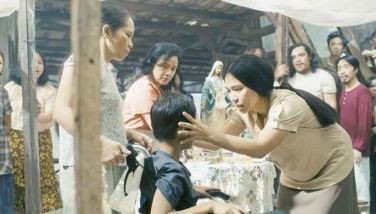Harana: Different versions, different generations, one story


“Uso pa ba ang harana?”
As if to echo the first line of the 90s classic “Harana,” an older version of the song has recently become a trending topic among nostalgic Pinoys. In the viral version, former Smokey Mountain member turned public official Tony Lambino interpreted the composition. Some not exactly familiar with technicalities in music might have just passed the video off as a piano cover. Nevertheless, after all these years, the version has enlightened many that “Harana” was never really a Parokya Ni Edgar original.
Here’s a little secret: I knew that all along. I was among the first ones who heard its original composition—way before Chito Miranda and his talented crew of rockers made it a hit and way before Lambino sang it to Geneva Cruz on Ryan Ryan Musikahan. My story of “Harana,” however, wasn’t just limited to having first dibs of the song. “Harana,” which is very close to my heart, led me to my own story of friendship and love. It was a recurring song my college barkada in Ateneo jammed to.
Being lucky enough to know the people behind “Harana” – and being one of the girls who was first serenaded with this soulful song -- it would have been a mistake to ignore the opportunity to have the gang retell the journey. In our recent episode of “Pamilya Talk,” “Harana” composer Eric “Yappy” Yaptangco, the song’s recording artists Tony and Chito, and the man who connected them all -- Cholo Mallillin -- came together for the first time to paint the whole story. What followed: A laughter-filled trip down memory lane highlighted by the boys singing “Harana” altogether for the first time!
Bridging torpes and nenes
Yappy, whom I met back in college as part of Ateneo’s political party Hudyat, wrote “Harana” in 1989. Yappy and some of our ka-barkadas called themselves “torpe” when it came to courtship, hence relying on serenades as their way to ask girls out.
Each harana followed a simple sequence, although elaborate when it came to the preparations. First, our friend who wanted to woo a love interest would have to bring her alone to a secluded area – like an overlooking site in Beverly Hills, Antipolo. Clad in barong and maong and a guitar in hand, the designated “harana boys” would then come in to sing a number of OPM songs. To end the gimmick, our manliligaw would then perform a solo as a way of professing his love.
Yappy recalled in amusement, “Maski di marunong kumanta, kailangan susubukan. Kailangan galing sa puso, maski hindi perfect yung pagka-kanta.”

"In between campaigning for the student council elections and attending rallies, Hudyat members would constantly have jam sessions with their guitars while hanging out at the Ateneo’s Colayco lobby."
He called the “tradition” rather effective that time, with even a girl friend bravely doing her own harana to a guy she liked. After serenading a couple of times, Yappy finally got inspired to write a song entirely about it.
“One night kong sinulat,” he said. The thoughts, the emotions, the random details—from the weather (“Puno ang langit ng bituin, at kay lamig pa ng hangin…”) down to every awkward and anxious moment (“Meron pang dalang mga rosas suot nama’y maong na kupas).
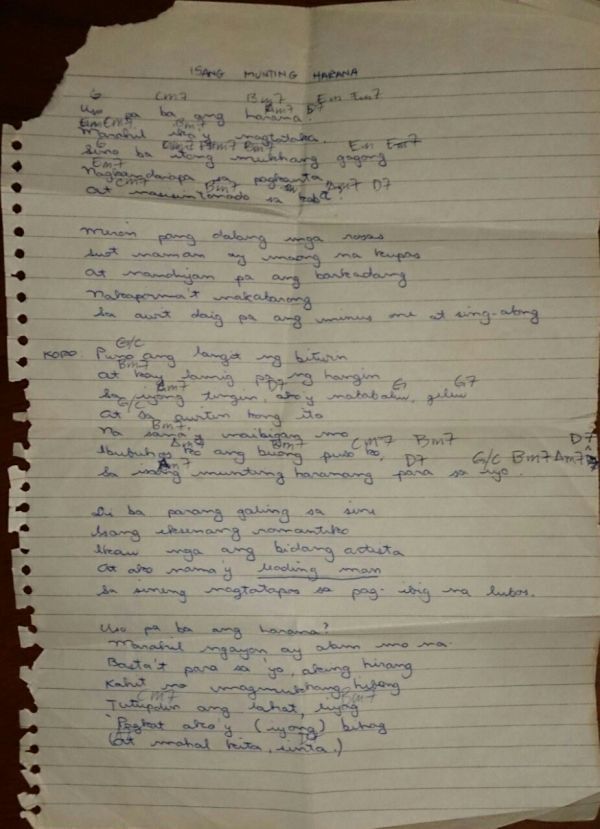
The earliest transcription of the song, "Isang Munting Harana," in the handwriting of the composer himself.
(At nariyan pa ang barkada, nakaporma’t naka barong sa awiting daig pa ang minus one at sing along…”). Yappy remembered being so connected to the song that he finished writing it in two hours.
“Eto yung kantang gustong lumabas na talaga at maiparinig sa iba,” he said.
From jamming material to musical success
Yappy and the harana boys performed the song at our university events, bringing love and kilig in the Katipunan air. It helped that a lot of our fellow students also got into
jamming, with a guitar and Jingle Chordbook Magazine always to be found in sight. It was Ateneo’s anthem in a way—we all knew how to sing “Harana.”
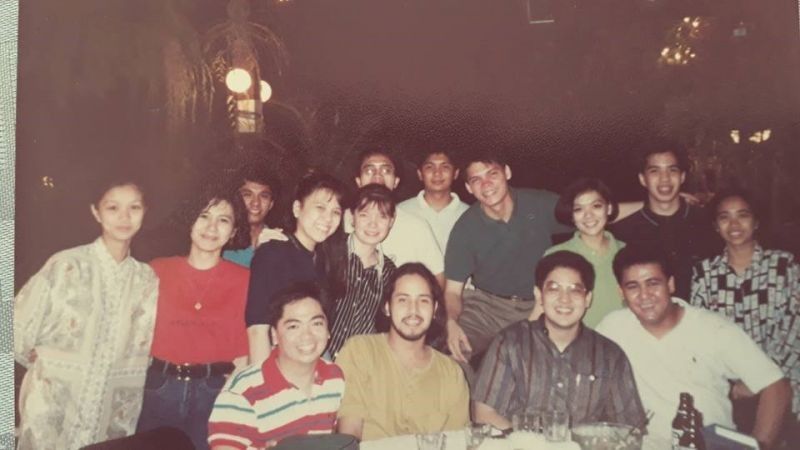
"Hudyat -- the longest running political party in Ateneo then -- accomplished so much in the arena of student politics in Ateneo. Yet our lasting legacy will be our tradition of the Harana... For us, this was just a lot of fun and was our way of supporting each other."
“People wanted to learn the song, they wanted to use it. ‘Harana’ had a life of its own in the Ateneo community,” added Cholo. He, himself, did a cassette recording of the song, officially becoming the first one to do so ahead of other artists. Yet, his role only proved more essential in furthering the popularity of the song later on.
He was the one who taught “Harana” to a young Tony Lambino, brother of his Bukas Palad Music Ministry co-member Celine. Tony, who swore to have kept the original paper containing Cholo’s handwritten lyrics and chords, would then include the song in a future album.
Cholo later taught in Ateneo High School, where he would meet teenager Chito Miranda. He used “Harana” in one of his class modules, piquing the interest of then aspiring rocker Chito. Separately, Chito found himself in amazement at how a ka-barkada “bad boy” rocked to this supposedly cheesy love song and made it cool. He had to learn it, he told himself.
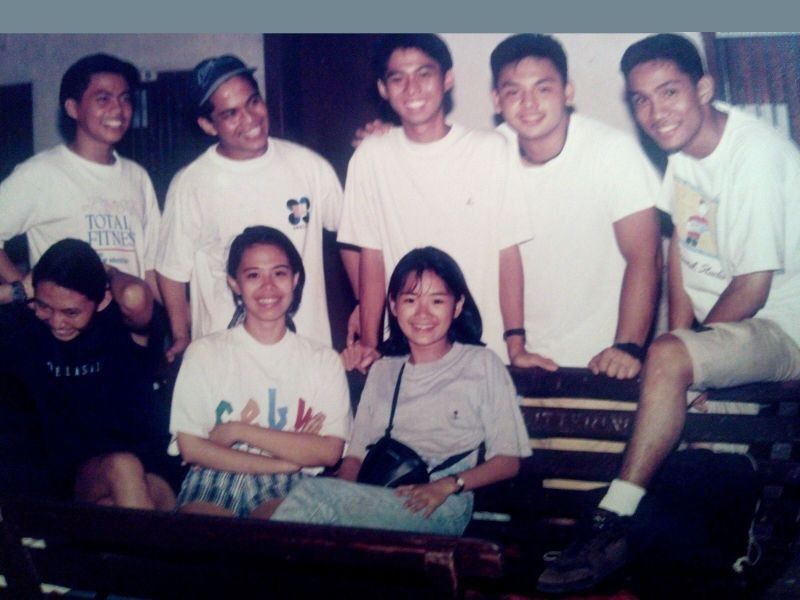
“Naging maugong ang Harana sa campus,” recalled Cholo Mallillin (far right), my classmate and our batch-balladeer, who was the one who taught Harana to the younger batches, including Tony Lambino and Chito Miranda
Cholo eventually connected Chito to Yappy. The fruit of all these back-and-forth’s became Parokya Ni Edgar’s “Harana,” an acoustic version with unintentionally altered chords and a missing third stanza.
Yet, Chito claimed it’s that song that catapulted them to mainstream fame. “It was our first number one hit! I’m so thankful for the song and sir Yappy,” he said on the show, about what would also hand them the Best Southeast Asia Music Video in the MTV Video Music Awards in 1999. In jest, he added, “Dahil dyan nagkaroon ng girls sa concerts namin!”
As if to back up his former student’s joke, Cholo called “Harana” different from Parokya’s other rock hits when it came to its message of young love and, more so, enduring friendships.
“Pag kumanta na ang Parokya ng ‘Harana,’ tatahimik na yung mga nasa mosh pit. ‘Tapos mamaya, kumakanta na sila. Iba yung effect ng ‘Harana’ sa crowd ng Parokya.”
The magic of ‘Harana’
Our “Pamilya Talk” episode effortlessly turned into not just a class reunion of some sort, despite our guests not belonging to one batch nor one circle of friends. And it’s many thanks to “Harana.”
As Cholo aptly put it, “Just looking at us now, parang may magic na nangyari at nagkatagpo- tagpo ang mga landas natin at nailabas itong napakagandang kantang ito.”

“Harana represented our youthful idealism at that time. As the barkada had gone off to their separate lives and careers, we all still share that desire to make the world even just a bit better, and our bonds have just become stronger through the years. While it’s great to recount all the adventures we've had in our lives, we’ll most fondly remember the people we were with through all of these times.”
Tony, who always looks back to his performing roots even when he keeps busy as Bangko Sentral ng Pilipinas’ Managing Director, attributed the so-called “magic” to this work of art in the first place being a work of heart.
“Legend yung ‘Harana.’ Para syang agimat sa mga manliligaw,” he said. “Napaka-authentic yung pagsulat ni Yappy. Napaka-authentic ng pagkanta ng Parokya. Nung una kong narinig mula kay Cholo, ganun din—napaka-authentic! Damang-dama yung pakiramdam. Na-capture nya lahat yung totoong kwento. Marasap kantahin, masarap pakinggan! Talagang nakaka-move yung experience!”
Chito could only add, “That’s the essence of the song—it’s a love song dedicated to a girl pero mas malaking bagay dun yung kwento ng barkada mo having your back more than the romantic side.”
More than witnessing how “Harana” grew to be a certified OPM sensation beyond Ateneo’s fences, Yappy, Cholo, Tony, and Chito draw satisfaction from how the song has brought Filipinos of all generations in terms of shared stories of friendship and young love.
This is what keeps Yappy more than grateful all these years as the song’s original author.
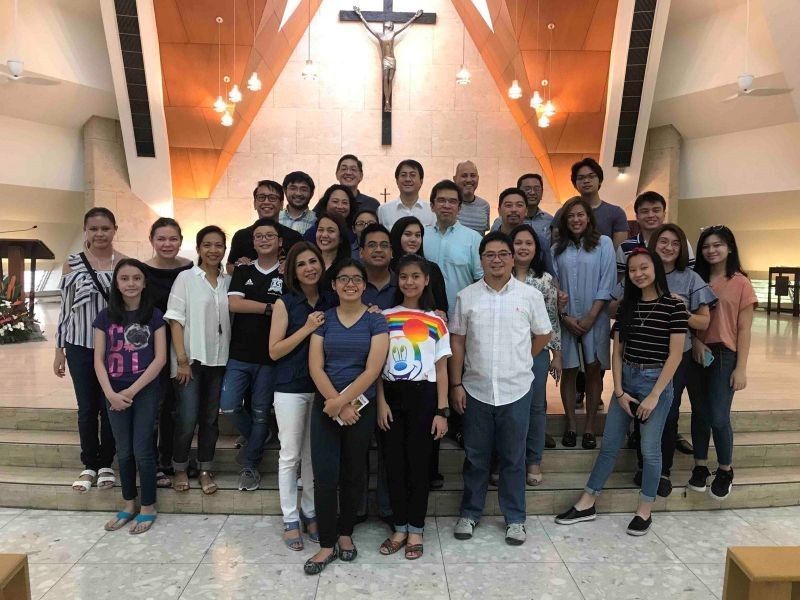
“Joining Hudyat opened my eyes to different social and political perspectives, which would later help me in my service as a journalist and social entrepreneur. Because of the friendships formed, Hudyat gave my college life more fun, more character, and more meaning. I even married a fellow Hudyat member! To this day, I feel blessed knowing these people who would eventually become my brothers and sisters for life!”
“Lahat ng dagdag, bawas, at pagkakaiba—kasama na yun sa kantang iyon… May buhay na yung kanta. Ang natuwa hindi lang ako. Lahat tayo. Lahat tayo, may kwento—nagdidikit-dikit. Pag nagdidikit-dikit ang mga kwento natin, mas lalong sumasarap,” he said. “Yumayaman yung experience, yumayaman tayong lahat. Hindi lang dahil sa koneksyong romantiko o barkadang koneksyon. Yung tiwala, yung pag-ibig, yan talaga yung hinahanap natin ngayon. Yun yung kelangang ituloy lang natin.”
And it’s with these stories and journeys I say that “Harana” will remain uso—forever.
---
Please watch Pamilya Talk on Facebook, YouTube and Kumu (@JingCastaneda – 6pm Monday & Wednesday; 7 p.m. Tuesday). Please share your stories or suggest topics at [email protected]. You can also follow and send your comments via my social media accounts: Instagram, Facebook, YouTube, Twitter and Kumu.
- Latest
- Trending

















